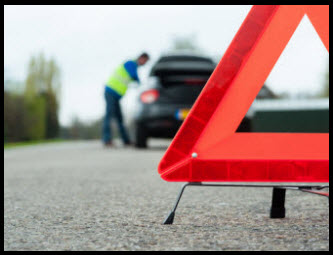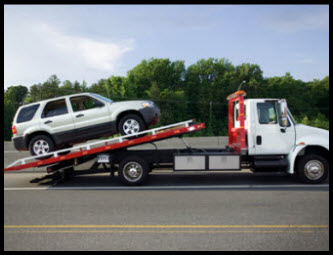It is important to practice defensive driving if you don’t already, since the weather can take a turn at any time. It may surprise you that weather conditions beyond ice and snow can be a risk to drive in. Below are the worst conditions to drive in that we Highway 30 Towing would like to share to help you be more cautious.
Dangers of Driving in the Rain
Rain is responsible for more driving deaths than snow in 39 of 50 states, and sometimes up to 300 in a single day compared to the typical 20-30in some cities such as Los Angeles. People may not be as cautious on a wet road as they are on an icy road, while rain more common than snow and fog in many areas. Visibility is potentially reduced in rain as well. In places that do not get a lo of rainfall, rainy roads can be especially dangerous. This is due to the oil residue that builds up on the roads throughout the year. Even a light shower can make the roads incredibly dangerous when it hasn’t rained in a while.
Drive Slower in the Rain
1) Due to a build-up of oil residue mixing with water, the road is most dangerous when it first starts to rain.
2) When the road is wet, always slow down.
3) In the rain, brake slower and earlier. This allows for maintaining a safe distance from other vehicles and reduces the risk of hydroplaning.
4) Since it can cause your car to speed up if you hydroplane, do not use cruise control.
5) To make it easy for other drivers to see you in the rain, keep your headlights on.
6) Utilize a defroster.
7) Do not brake or turn the steering wheel suddenly should you hydroplane. Until the tires get traction again, slowly ease off the gas and steer straight.
How Does Fog Affect Driving?
Particularly when you encounter dense fog suddenly, fog can dramatically reduce visibility. The vehicles in front of you that may have stopped or slowed dramatically may go unseen. Use fog lights but never high beams which can cause glare that actually makes it harder to see if you have them. Because it keeps your taillights on for other drivers, be sure your headlights are on, even in the day. Since you may not be able to see more than 20 feet ahead, slow down and stay focused on the road.
When is it Too Windy to Drive?
When driving because gusts can actually blow your vehicle off course and cause you to lose control of the vehicle, strong winds can be dangerous. As they have more trouble maintaining control, high winds are most dangerous for large and high vehicles. When it’s windy, give trucks plenty of room. Take care to adjust your steering wheel if needed and driver slower than usual. Without jerking the wheel, should you need to steer yourself back in the right direction gently.
How to Drive in the Snow or Ice
Heavy snowfall reduces visibility and increases stopping distance. Just below the snow, it can also hide road hazards. Remember to drive slowly and accelerate and brake slowly when driving in the snow. Do not try to power up hills or you can lose traction as increase your distance from other vehicles.
Roadside Assistance & Towing Services in Cassia, Gooding, Jerome & Twin Falls Counties in Magic Valley, Idaho & Jackpot, Northern Nevada
Should you find yourself in collision or if you need roadside assistance services, call Highway 30 Towing of Twin Falls, ID and let us assist you!









